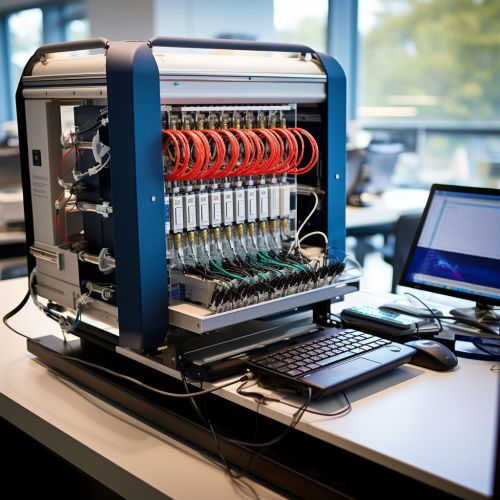Human Genome Project
Overview
The Human Genome Project (HGP) was an international scientific research project with the goal of determining the sequence of nucleotide base pairs that make up human DNA, and of identifying and mapping all of the genes of the human genome from both a physical and a functional standpoint. It remains the world's largest collaborative biological project. The project was proposed and funded by the US government; planning started in 1984, the project got underway in 1990, and was declared complete in 2003.


Goals
The main goals of the Human Genome Project were to provide a complete and accurate sequence of the 3 billion DNA base pairs that make up the human genome and to find all of the estimated 20,000 to 25,000 human genes. The project also aimed to sequence the genomes of several other organisms that are important to medical research, such as the mouse and the fruit fly. In addition, the project sought to develop new tools for data analysis and to address the ethical, legal, and social issues (ELSI) that might arise from the project.
Methods and Technology
The Human Genome Project relied on two key technologies: DNA sequencing and bioinformatics. DNA sequencing is the process of determining the precise order of nucleotides within a DNA molecule. It includes any method or technology that is used to determine the order of the four bases: adenine, guanine, cytosine, and thymine. The advent of rapid DNA sequencing methods has greatly accelerated biological and medical research and discovery.
Bioinformatics is the application of computer technology to the management of biological information. Computers are used to gather, store, analyze and integrate biological and genetic information which can then be applied to gene-based drug discovery and development. The science of Bioinformatics, which is the melding of molecular biology with computer science, is essential to the use of genomic information in understanding human diseases and in the identification of new molecular targets for drug discovery.


Results
The results of the Human Genome Project are numerous and have profound implications for biology and medicine. Firstly, the project has provided a complete and accurate sequence of the 3 billion DNA base pairs that make up the human genome. This sequence information is stored in databases available to anyone on the Internet. Secondly, the project has identified all of the approximately 20,000-25,000 genes in human DNA. Thirdly, the project has developed new tools for data analysis and stored this information in databases. Finally, the project has addressed the ELSI that arise from genome research.
Impact
The impact of the Human Genome Project is vast. The availability of the human genome sequence and tools for genomic analysis has revolutionized biomedical research. In particular, it has fueled the discovery of disease-related genes, which in turn has made it possible to develop new strategies for the diagnosis, treatment, and prevention of disease. The project has also had a major impact on the biotechnology industry, stimulating the development of new products and services, and creating new jobs and businesses.
Ethical, Legal, and Social Implications
The Human Genome Project anticipated and addressed the ethical, legal, and social implications of genome research from the outset. The project dedicated a portion of its funding to the study of these issues, and established the ELSI Research Program to identify and address issues raised by genomic research. This program has become a model for ELSI programs around the world.
See Also
References
1. Collins, F.S., Morgan, M., and Patrinos, A. (2003). The Human Genome Project: Lessons from Large-Scale Biology. Science, 300(5617), 286-290. 2. Green, E.D., Watson, J.D., and Collins, F.S. (2015). Human Genome Project: Twenty-five years of big biology. Nature, 526(7571), 29-31. 3. Lander, E.S., Linton, L.M., Birren, B., et al. (2001). Initial sequencing and analysis of the human genome. Nature, 409(6822), 860-921.
